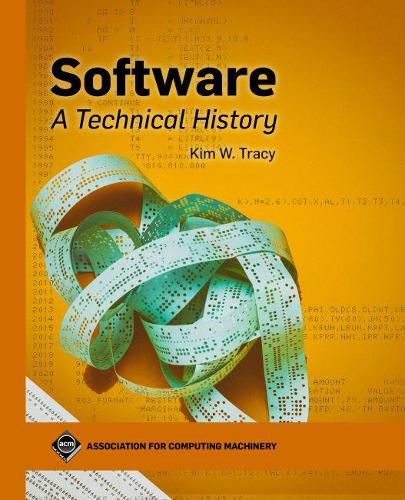Readings Newsletter
Become a Readings Member to make your shopping experience even easier.
Sign in or sign up for free!
You’re not far away from qualifying for FREE standard shipping within Australia
You’ve qualified for FREE standard shipping within Australia
The cart is loading…






This title is printed to order. This book may have been self-published. If so, we cannot guarantee the quality of the content. In the main most books will have gone through the editing process however some may not. We therefore suggest that you be aware of this before ordering this book. If in doubt check either the author or publisher’s details as we are unable to accept any returns unless they are faulty. Please contact us if you have any questions.
Software history has a deep impact on current software designers, computer scientists, and technologists. System constraints imposed in the past and the designs that responded to them are often unknown or poorly understood by students and practitioners, yet modern software systems often include old software and historical programming techniques. This work looks at software history through specific software areas to develop student-consumable practices, design principles, lessons learned, and trends useful in current and future software design. It also exposes key areas that are widely used in modern software, yet infrequently taught in computing programs. Written as a textbook, this book uses specific cases from the past and present to explore the impact of software trends and techniques.
Building on concepts from the history of science and technology, software history examines such areas as fundamentals, operating systems, programming languages, programming environments, networking, and databases. These topics are covered from their earliest beginnings to their modern variants. There are focused case studies on UNIX, APL, SAGE, GNU Emacs, Autoflow, internet protocols, System R, and others. Extensive problems and suggested projects enable readers to deeply delve into the history of software in areas that interest them most.
$9.00 standard shipping within Australia
FREE standard shipping within Australia for orders over $100.00
Express & International shipping calculated at checkout
This title is printed to order. This book may have been self-published. If so, we cannot guarantee the quality of the content. In the main most books will have gone through the editing process however some may not. We therefore suggest that you be aware of this before ordering this book. If in doubt check either the author or publisher’s details as we are unable to accept any returns unless they are faulty. Please contact us if you have any questions.
Software history has a deep impact on current software designers, computer scientists, and technologists. System constraints imposed in the past and the designs that responded to them are often unknown or poorly understood by students and practitioners, yet modern software systems often include old software and historical programming techniques. This work looks at software history through specific software areas to develop student-consumable practices, design principles, lessons learned, and trends useful in current and future software design. It also exposes key areas that are widely used in modern software, yet infrequently taught in computing programs. Written as a textbook, this book uses specific cases from the past and present to explore the impact of software trends and techniques.
Building on concepts from the history of science and technology, software history examines such areas as fundamentals, operating systems, programming languages, programming environments, networking, and databases. These topics are covered from their earliest beginnings to their modern variants. There are focused case studies on UNIX, APL, SAGE, GNU Emacs, Autoflow, internet protocols, System R, and others. Extensive problems and suggested projects enable readers to deeply delve into the history of software in areas that interest them most.